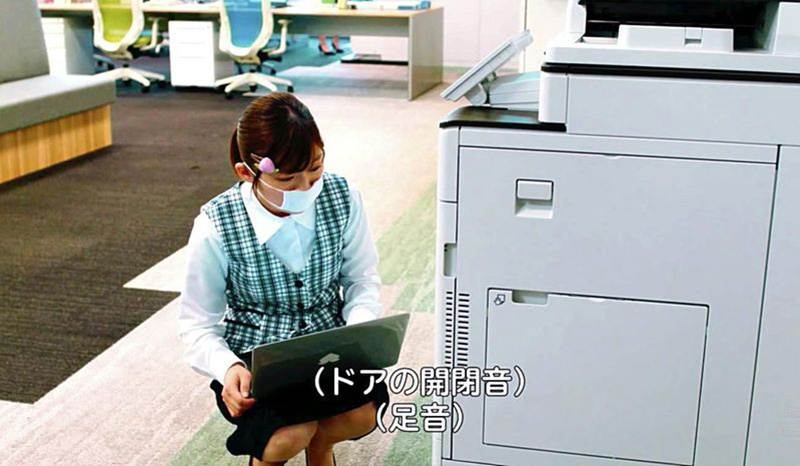
A scene from “Momo Ume,” a show distributed by Hulu with subtitles intended for the hearing impaired, is seen.
12:52 JST, December 27, 2021
Streaming services have increasingly added more detailed Japanese subtitles to movies, shows and other programs to enhance the viewing experience for the hearing impaired and elderly.
The subtitles provide not only the script content but also descriptions of background and other sounds.
One reason for the move is that operators are striving to adhere to the U.N. Sustainable Development Goals initiative, whose guiding principle is “No one will be left behind.”
Netflix distributes original content in more than 30 languages around the world. This year, the amount of Japanese-subtitled content intended for the hearing impaired is expected to increase by 15% from the previous year.
Netflix has formed a team specializing in subtitling for viewers with hearing impairments. The company says the amount of content subtitled in Japanese is second only to English.
Hulu has been working since 2018 on subtitling more content, mainly its own. It says staff members create subtitles by thinking about what expressions viewers with hearing impairments would enjoy, rather than using voice recognition software, which automatically converts spoken words into text.
Hulu plans to make the subtitling service available to other content producers. “The need for this service is immense, so we’ll devote more money and effort to it,” said a person in charge of the service.
According to the Digital Content Association of Japan, the streaming market has grown rapidly, increasing to ¥371 billion in 2020, up 34% from the previous year.
Many streaming services have adopted the closed captioning system, which allows viewers to easily turn on and off text descriptions. The hearing impaired have embraced streaming services that offer such a function.
“We live in an age in which many TV programs are subtitled,” said an official of the Information and Culture Center for the Deaf, a social welfare corporation. “For the younger generations of people with hearing impairments, reading subtitles is becoming the norm, including on video posting sites. I hope streaming services will expand the use of subtitles further.”
"Society" POPULAR ARTICLE
-

M4.9 Earthquake Hits Tokyo, Neighboring Prefectures
-

Israeli Tourists Refused Accommodation at Hotel in Japan’s Nagano Pref., Prompting Protest by Israeli Embassy and Probe by Prefecture
-

M7.5 Earthquake Hits Northern Japan; Tsunami Waves Observed in Hokkaido, Aomori and Iwate Prefectures
-

Tsukiji Market Urges Tourists to Avoid Visiting in Year-End
-

M5.7 Earthquake Hits Japan’s Kumamoto Pref., Measuring Upper 5 Intensity, No Tsunami Expected
JN ACCESS RANKING
-

Keidanren Chairman Yoshinobu Tsutsui Visits Kashiwazaki-Kariwa Nuclear Power Plant; Inspects New Emergency Safety System
-

Tokyo Economic Security Forum to Hold Inaugural Meeting Amid Tense Global Environment
-

Imports of Rare Earths from China Facing Delays, May Be Caused by Deterioration of Japan-China Relations
-

University of Tokyo Professor Discusses Japanese Economic Security in Interview Ahead of Forum
-

Japan Pulls out of Vietnam Nuclear Project, Complicating Hanoi’s Power Plans























